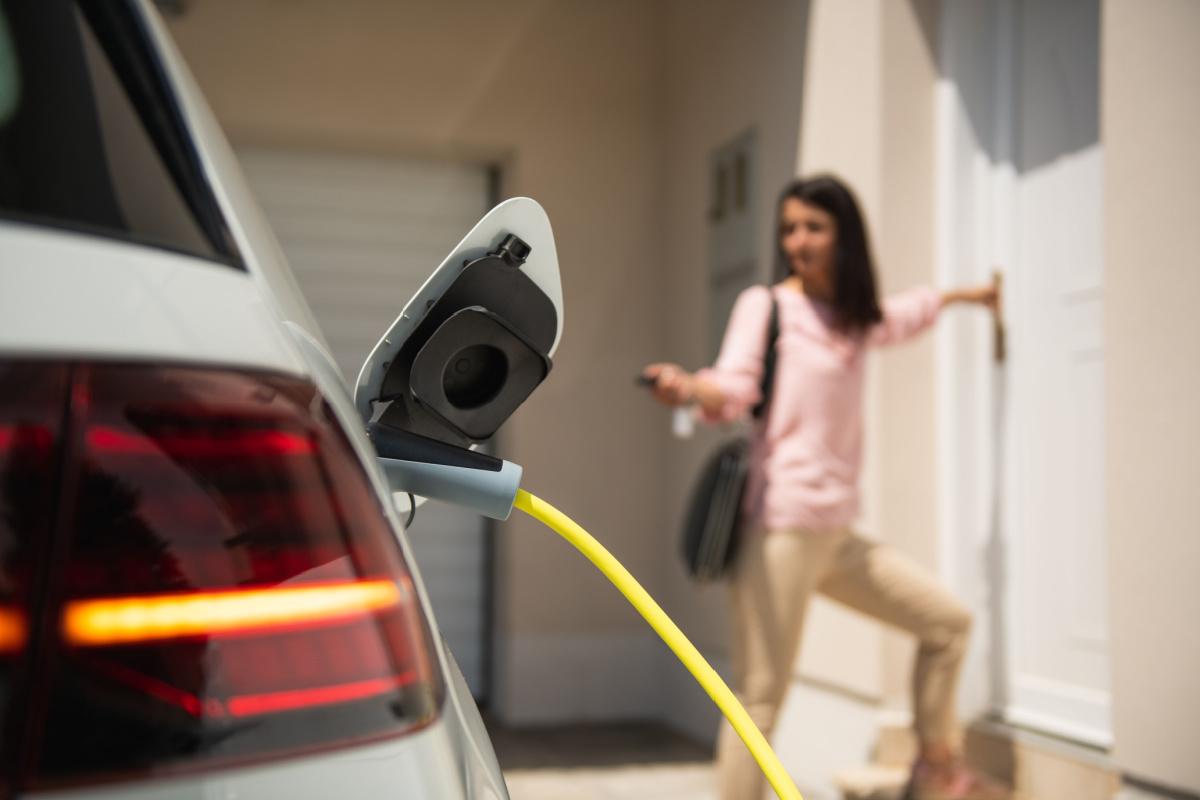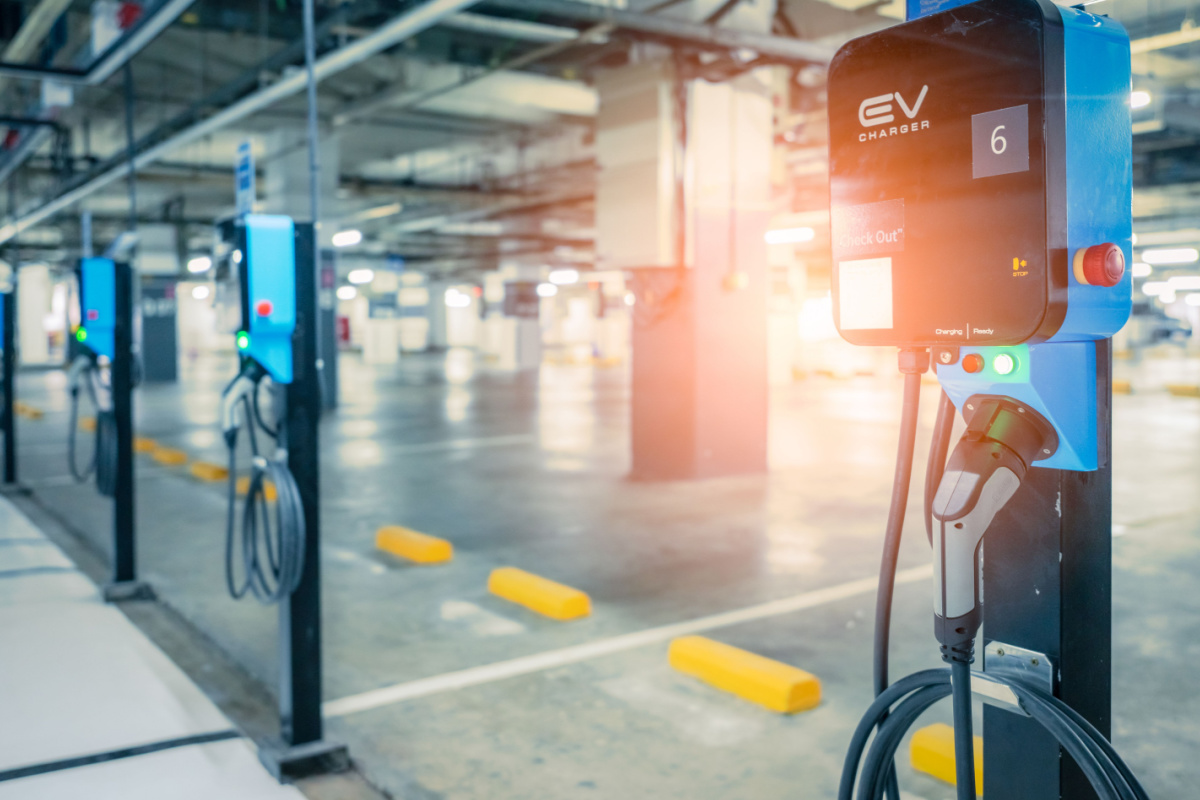A Look at the Pros and Cons of Electric Cars
What do climate change and rising gas prices have in common? Electric cars – a win-win for the earth and your wallet.
Whether you’re eyeing the switch to electric cars because of soaring gas prices or your eco-awareness, there are many vehicle options to choose from.
But before you leap to an electric vehicle, it's good to know what you're diving into – both the good and the bad. Let's delve into the pros and cons of electric cars to help you make an informed decision.
How Do Electric Cars Work?
Electric vehicles (EVs) are designed around several key components that work together to provide a smooth and efficient driving experience:
- Electric Motor: This is the primary component that propels the vehicle. It uses electrical energy to produce motion, replacing the traditional internal combustion engine found in gasoline vehicles.
- Battery Packs: These serve as the heart of an EV. Battery packs are energy storage systems, often made up of lithium-ion cells. They store the electricity that powers the motor.
- Direct Current (DC) and Alternating Current (AC): Batteries provide power in DC, a type of electrical current that flows in one direction. However, the electric motor operates on AC, where the flow of electricity periodically reverses direction.
- Inverter: An inverter bridges the gap between the battery and the motor. This device converts the DC from the battery into AC to power the electric motor.
- Battery Management System (BMS): This electronic system oversees the battery cells, ensuring they operate within safe and optimal limits. It optimizes performance and extends battery life.
- Onboard Charger: When you plug your EV into a charging station or a household outlet, the onboard charger converts the AC power from the grid into DC power, which then charges the vehicle's batteries.
- Thermal Management System: Batteries are sensitive to temperature variations. The thermal management system regulates the battery pack's temperature, ensuring it doesn't get too hot or too cold, which can affect performance and lifespan.
- Regenerative Braking: Unlike traditional braking systems that dissipate braking energy as heat, regenerative braking captures this energy. It converts the energy usually lost during braking back into electricity, which is then stored in the battery for later use.
Pros and Cons of Electric Cars: Let's Explore the Truth
With rapid advancements in EV technology and a global shift toward sustainability, let's dive into the compelling benefits and challenges of electric cars.
The Benefits of Electric Cars
When it comes to the pros of electric cars, the advantages extend far beyond mere novelty.

From cost savings to environmental stewardship, electric cars have numerous advantages.
Lower Operating Costs
Electric cars not only drive us into the future but also offer multiple financial benefits compared to traditional gasoline vehicles:
- No Gasoline Expenses: This is arguably the most tangible saving. The U.S. Department of Energy has indicated that powering an electric vehicle (EV) costs roughly half as much as fueling a gasoline vehicle.
- No Oil Changes: Traditional vehicles typically need oil changes every 3,000 to 7,000 miles, which can accumulate to several hundred dollars annually. With EVs, this recurring cost is eliminated.
- Absence of Exhaust System Repairs: Gasoline vehicles often require exhaust system repairs due to wear and tear, which can cost anywhere from $100 to $600 on average. With EVs not having exhaust systems, this expense is avoided.
- Fewer Moving Parts: Electric cars have fewer moving components than their internal combustion engine counterparts. This means a reduced chance of unexpected breakdowns. For example, EVs don't have timing belts, head gaskets, or spark plugs, which can be expensive to replace or repair in gasoline vehicles.
Considering these factors, EVs' long-term operational cost savings are substantial, further enhancing their appeal to prospective buyers.
Government Incentives
Although the initial price tag of an EV might seem high, various rebates and tax credits can offset this cost, making the transition to electricity more financially appealing. For instance, the U.S. federal government offers a tax credit of up to $7,500 for new electric vehicles, depending on the car's battery size and the buyer's tax liability.
Additionally, states like California offer additional rebates or incentives for residents. California's Clean Vehicle Rebate Project (CVRP) offers rebates up to $7,500 for purchasing or leasing qualifying vehicles, including battery electric vehicles and plug-in hybrids.
Advanced Safety and Driving Innovations
According to the Insurance Institute for Highway Safety (IIHS), many electric vehicles have earned top safety ratings, showcasing their advanced safety features. Beyond the now-commonplace automatic emergency braking – which the IIHS found can reduce front-to-rear crash rates by 50% – these vehicles often feature:
- Adaptive Cruise Control: This system adjusts the vehicle's speed to maintain a safe following distance from the car ahead.
- Lane Departure Warning and Lane Keeping Assist: These features alert drivers when they begin to drift out of their lane and can even gently steer the car back into its lane.
- Blind Spot Detection: Alerts drivers when a vehicle is in their blind spot, helping prevent potential side collisions.
- Cross-Traffic Alert: Provides warnings to drivers about approaching vehicles when
- Pedestrian Detection and Braking: Recognizes pedestrians and can apply brakes automatically if a collision is imminent.
For instance, the Tesla Model 3 was awarded the IIHS Top Safety Pick+ for 2021 and 2022. Furthermore, as per the National Highway Traffic Safety Administration (NHTSA), many electric vehicles have received five-star safety ratings, which speaks volumes about their safety features and crash resilience.
Superior Performance Metrics
Electric vehicles (EVs) are more than just eco-friendly choices; they offer exhilarating performance metrics that can redefine the driving experience. One of the most notable performance aspects of EVs is their impressive acceleration. For instance, the Tesla Model S Plaid can accelerate from zero to 60 mph in under two seconds, making it one of the fastest-accelerating cars in the world.
Moreover, EVs often come with improved handling characteristics. Thanks to the battery placement, they typically have a low center of gravity, which translates to enhanced stability, reduced body roll in corners, and better overall control.

This advantage isn't limited to city drives or highways. Take, for example, the Rivian R1T, an electric pick-up truck with remarkable off-road prowess in diverse terrains and conditions. Beyond speed and stability, electric vehicles' smooth and consistent torque delivery ensures a refined driving experience, eliminating the jerks and pauses found in traditional internal combustion engines during gear changes.
The Disadvantages of Electric Cars
While electric cars are game-changers in many respects, it's worth taking a close look at their limitations. From charging constraints to the hefty initial investment, here are some factors you may need to consider:
Charging Infrastructure
The growth of EVs has highlighted the need for a robust charging infrastructure. Urban areas have seen a surge in charging stations in recent years, with the number of public and private EV charging ports in the U.S. doubling from 2019 to 2023. However, the rapid rise in EV sales means this expansion must still improve to meet demand. In the meantime, electric car owners face potentially long wait times at busy charging hubs.
Rural regions often face a scarcity of charging stations, creating "charging deserts" where EV options become less feasible for residents. Additionally, the variety of charging standards and speeds adds another layer of complexity for users.
Tesla Superchargers, for instance, offer fast charging but are exclusive to Tesla vehicles. While more broadly compatible, universal chargers might not consistently deliver the same speedy top-ups. The charging time for an EV can range from 30 minutes on a DC Fast Charger to over 12 hours on a standard Level 2 charger, depending on the battery capacity and its current state of charge.
Initial Costs
Electric vehicles tend to have higher price tags than gasoline-powered ones. Much of this cost arises from the advanced lithium-ion batteries that power EVs. These batteries, integral to the vehicle's functionality, can account for 25% to 30% of the electric vehicle's total cost due to their complexity and the rare materials required for production.
Moreover, electric vehicles are often integrated with cutting-edge technologies that are not always standard in conventional cars. Features such as regenerative braking, intricate onboard computers, and high-end drivetrains can increase the vehicle's initial cost. Additionally, even though the production of EVs has been ramping up, the scale hasn't yet reached that of traditional cars. This smaller production scale can mean less economy of scale, resulting in higher per-unit costs.
Predominantly, new electric vehicles launched tend to be positioned in the luxury segment, with an average selling price surpassing $61,000. This is approximately $12,000 above the average cost of vehicles across the industry, as highlighted by Consumer Reports.
Limited Range
One of the more frequently cited disadvantages of electric vehicles (EVs) is their limited driving range, especially compared to traditional gasoline-powered cars. On average, many electric vehicles, particularly the more affordable models, offer a range of around 150 to 250 miles on a single charge. In contrast, a gasoline vehicle can travel 300 to 400 miles on a full tank, depending on fuel efficiency.
External factors can further exacerbate this anxiety. Terrain and weather, for example, significantly impact an EV's range. Cold temperatures can reduce a battery's efficiency and its overall range. Driving uphill or on mountainous terrains can consume more power, decreasing the vehicle's range.
Similarly, using heating or air conditioning can drain the battery faster. According to a study by AAA, temperatures of 20°F combined with using the vehicle's heater can decrease an electric car's range by over 40%.
Battery and Home Charging Costs
Battery health is a primary concern for potential EV buyers. Many manufacturers offer warranties that last eight years or cover up to 100,000 miles. However, EV batteries are not foolproof and often have defects that reduce their capacity and range.
The cost of replacing an electric vehicle's battery can vary widely depending on the make and model of the car. For some popular models, a replacement battery can cost between $5,000 and $15,000.

Another factor to consider is the potential cost of home charging infrastructure. Setting up a home charging station can be an added expense for a new EV owner, depending on the station. For instance, installing a Level 2 home charging unit can range from $500 to $2,000, not including potential electrical upgrades that might be required.
Additionally, adding a home charging station may lead to an uptick in monthly utility bills. On average, charging an EV can increase household electricity consumption by $606.15 annually.
Limited Towing Capacity
Towing capacity is a key consideration for many drivers, especially for those who frequently haul trailers, boats, or other hefty equipment. While electric vehicles offer numerous advantages, they have often lagged behind their gasoline and diesel counterparts in towing capacity.
On average, many mid-sized electric vehicles can tow between 1,500 to 3,500 pounds. In contrast, a typical mid-sized gasoline SUV or truck might handle loads of 2,500 to 7,000 pounds or more. For context, a small utility trailer or a jet ski usually weighs around 1,000 pounds, while a larger boat or camper weighs 2,500 to 5,000 pounds.
This means that while electric vehicles can manage lighter towing tasks, traditional gasoline vehicles are often more suitable for heavier loads like larger boats or trailers.
One factor that can affect the towing capabilities of EVs is the added strain on the battery. Pulling a heavy load can significantly reduce the range of an electric vehicle, which may be a concern for those embarking on longer journeys with a trailer.
Nevertheless, recent advancements in electric vehicle technology have produced some standout performers. For example, the Tesla Model X, an all-electric SUV, boasts a towing capacity of up to 5,000 pounds, putting it on par with many gasoline vehicles.
Pros and Cons of Electric Cars on the Environment
When examining electric vehicles, we focus on their ecological aspects. It's valuable to assess their effect on the environment.
Pros
The upside of driving an electric vehicle is often linked to environmental considerations. Let's delve into some of these benefits that make electric cars a green choice.
Environmentally Friendly
Electric vehicles stand out for their minimal environmental footprint. A notable attribute of EVs is their production of zero tailpipe emissions, ensuring they don't release detrimental pollutants such as carbon monoxide, nitrogen oxides, or hydrocarbons into the atmosphere. According to the U.S. Environmental Protection Agency (EPA), transportation accounted for 29% of total U.S. greenhouse gas emissions in 2019, mostly from gasoline-powered vehicles.
Lower Carbon Footprint
EVs significantly reduce carbon emissions, especially with their zero tailpipe emissions. Their carbon footprint, which refers to the amount of carbon dioxide released into the atmosphere, is lower during driving and throughout their lifecycle.
A study by the Union of Concerned Scientists (UCS) found that electric cars emit less than half the climate pollutants of comparable gasoline-powered vehicles over the entire lifecycle of the car – from manufacturing to disposal. This advantage grows as the electricity grid becomes cleaner. In fact, just one electric car on the roads can save an average of 1.5 million grams of CO2 in over a year, equivalent to four return flights from London to Barcelona.
Energy Independence
Switching to electric vehicles offers a step towards energy independence and a tangible solution to the environmental challenges posed by our dependence on fossil fuels. Burning fossil fuels for transportation produces approximately 25% of global carbon dioxide emissions, a primary factor in climate change. Furthermore, oil drilling and transportation often lead to devastating environmental incidents like oil spills.
On the other hand, electric vehicles can be powered by a range of energy sources, including renewables like solar or wind. In fact, according to the International Energy Agency (IEA), renewable energy accounted for nearly 30% of global electricity generation in 2020, and this share is expected to rise in the coming years. Thus, as more of the electricity grid becomes powered by clean energy, EVs inherently become greener.
Cons
But it's not all roses and sunshine regarding the environmental side of electric vehicles. Below, we touch on some areas where they might fall short in their ecological promises.
Battery Production
Lithium-ion batteries, which power most EVs, rely on metals like lithium, cobalt, and nickel. The World Bank predicts that the production of these metals could increase by 500% by 2050 to meet the growing demand for clean energy technologies. Mining these materials has led to concerns about habitat destruction, water pollution, and increased carbon emissions.
For instance, lithium mining in Chile's Atacama Region exacerbates a severe water crisis, affecting Indigenous communities and their ancient cultures. As lithium demand surges due to its role in powering electric vehicles and other technologies, the mining process drains water resources and harms ecosystems. It threatens biodiversity, with local communities witnessing rivers and lakes disappearing.
Charging Infrastructure and Energy Sources
The U.S. Energy Information Administration (EIA) reported that in 2020, fossil fuels still accounted for about 60% of electricity generation in the U.S. Even if you drive an EV, if it is primarily charged using fossil-fueled electricity, the environmental benefits of using it can be compromised. Only when EVs are charged using renewable energy do they fully realize their ecological potential.
Infrastructure Environmental Impact
Developing roads and highways tailored for electric vehicles brings with it ecological considerations. For instance, Sweden unveiled eRoadArlanda, a stretch of roadway that can charge electric cars as they drive. While innovative, constructing such specialized infrastructure could lead to deforestation, displacement of wildlife, and a potential increase in carbon emissions due to construction activities.

Large-scale projects like these would require extensive land development, resource utilization, and transportation of construction materials, all of which can have significant environmental footprints. According to the International Energy Agency, building operations and construction emissions account for over one-third of global energy-related emissions.
Should You Buy an Electric Vehicle?
The decision to buy an electric car isn't straightforward. It requires balancing several factors to make the right choice.
- Lifestyle Considerations: Are you a city commuter or a long-haul driver? Electric cars excel in city driving with ranges of less than 200 miles, but long trips may require careful planning for charging stations.
- Financial Aspects: Though electric vehicles may have higher upfront costs, they often lead to savings in the long run. Maintenance is cheaper, energy costs are lower, and government incentives can make a significant difference.
- Ethical and Environmental Factors: If environmental impact is a priority for you, electric vehicles offer the benefit of reduced emissions and a lower carbon footprint. However, be aware of their downsides, like battery disposal.
- Technology and Future-Proofing: As cities prioritize renewable energy and sustainability, infrastructure for EVs is expanding. While current areas may lack robust EV provisions, urban planning's clear trajectory favors electric vehicles. This suggests that as cities progress toward sustainability, transitioning to an electric vehicle might align well with future urban landscapes.
Bottom Line
Electric vehicles offer an exciting glimpse into a more sustainable future. However, they are not without their challenges. The pros and cons of electric cars are deeply intertwined with our evolving relationship with technology and the environment.
Whether you're in it for the cost savings, the green cred, or the thrill of the ride, there's no denying the electric vehicle revolution is underway. And now, armed with this comprehensive guide, you're well-equipped to decide if an electric car is the right fit for you.
Electric Cars Pros and Cons FAQ
The world of electric vehicles is evolving rapidly, and you likely have some burning questions. Here, we'll tackle the most commonly asked queries to help you make an informed decision.
What Are the Different Types of EV Chargers Available?
There are three primary levels of EV charging:
- Level 1 Charging: Uses a regular household outlet (120 volts). It's the slowest form and is typically used for overnight charging at home.
- Level 2 Charging: Requires a specialized charging station and provides power from a 240-volt source. It's commonly found in public places and can charge a typical EV in four to eight hours.
- DC Fast Charging: Offers rapid charging, often charging an EV to 80% in under an hour. However, compatibility varies. For instance, Tesla's Supercharger stations, which utilize this fast-charging technology, are primarily for Tesla vehicles, though there have been discussions about opening them up to other EVs.
How Do I Install a Home Charging Station? What's the Cost?
Installing a home charging station generally involves the following steps:
- Assessment: Determine the best location for the charger, considering the distance to your vehicle and access to electrical systems.
- Electrical Work: Many homes will require upgrading to a higher-capacity circuit breaker. This ensures that the home's electrical system can handle the added load of charging an EV.
- Installation: Hire a licensed electrician to install the charging station. They will ensure it's set up safely and compliant with local codes.
- Inspection: In many areas, an electrical inspection is required post-installation to ensure safety.
As for the cost, while a Level 2 home charging unit can range from $500 to $2,000, installation costs vary based on electrical needs and can range from $200 to $1,000 or more. Additional costs might be associated with upgrading your home's electrical panel or running new electrical lines.
However, there are federal and state incentives available that can offset some of these costs. The U.S. Department of Energy states that potential tax credits or rebates can reduce purchase and installation costs.
What is the Current State of Public Charging Infrastructure?
The public charging infrastructure has expanded rapidly, especially in urban areas. According to the Department of Energy, from the fourth quarter of 2019 to the first quarter of 2023, the number of public and private EV charging ports in the U.S. nearly doubled from 87,352 to 161,562.
As of the first quarter of 2023, public charging ports represented approximately 88% of all charging ports. This growth signifies the rapid expansion of EV infrastructure and showcases the country's efforts to accommodate the increasing number of electric vehicles.
How Do I Find Public Charging Stations When I'm on the Road?
Finding public charging stations while on the move is easier than ever. Several apps and online platforms, such as PlugShare, ChargePoint, and the U.S. Department of Energy's Alternative Fueling Station Locator, allow users to locate nearby charging stations.
These platforms often provide real-time data on station availability, type of connector, charging speed, and sometimes user reviews. Furthermore, many modern electric vehicles have built-in navigation systems that can direct drivers to the nearest charging point.
Sources
- IRS. “Credits for new clean vehicles purchased in 2023 or after.” Accessed Oct. 22, 2023.
- The US Department of Energy. “Saving Money with Electric Vehicles.” Accessed Oct. 22, 2023.
- AAA. “How Often Should You Change Engine Oil.” Accessed Oct. 22, 2023.
- AAA. “Search For AAA Approved Auto Repair Facilities.” Accessed Oct. 22, 2023.
- Insurance Institute for Highway Safety (IIHS). “2021 Top Safety Pick.” Accessed Oct. 22, 2023.
- Office of Energy Efficiency & Renewable Energy. “FOTW #1299, July 17, 2023: The Number of Electric Vehicle Charging Ports in the U.S. Nearly Doubled in the Past Three Years.” Accessed Oct. 22, 2023.
- Consumer Reports. “Will an Electric Car Save You Money?” Accessed Oct. 22, 2023.
- AAA. “AAA Electric Vehicle Range Testing.” Accessed Oct. 22, 2023.
- Eco Cost Savings. “The Cost Of Charging An Electric Car At Home Revealed.” Accessed Oct. 22, 2023.
- United States Environmental Protection Agency. “Fast Facts on Transportation Greenhouse Gas Emissions.” Accessed Oct. 22, 2023.
- Union of Concerned Scientists. “Driving Cleaner.” Accessed Oct. 22, 2023.
- International Energy Agency. “Renewables.” Accessed Oct. 22, 2023.
- World Bank. “Climate-Smart Mining: Minerals for Climate Action.” Accessed Oct. 22, 2023.
- Natural Resources Defense Council. “Lithium Mining Is Leaving Chile’s Indigenous Communities High and Dry (Literally).” Accessed Oct. 22, 2023.
- U.S. Energy Information Administration. “What is U.S. electricity generation by energy source?” Accessed Oct. 22, 2023.



